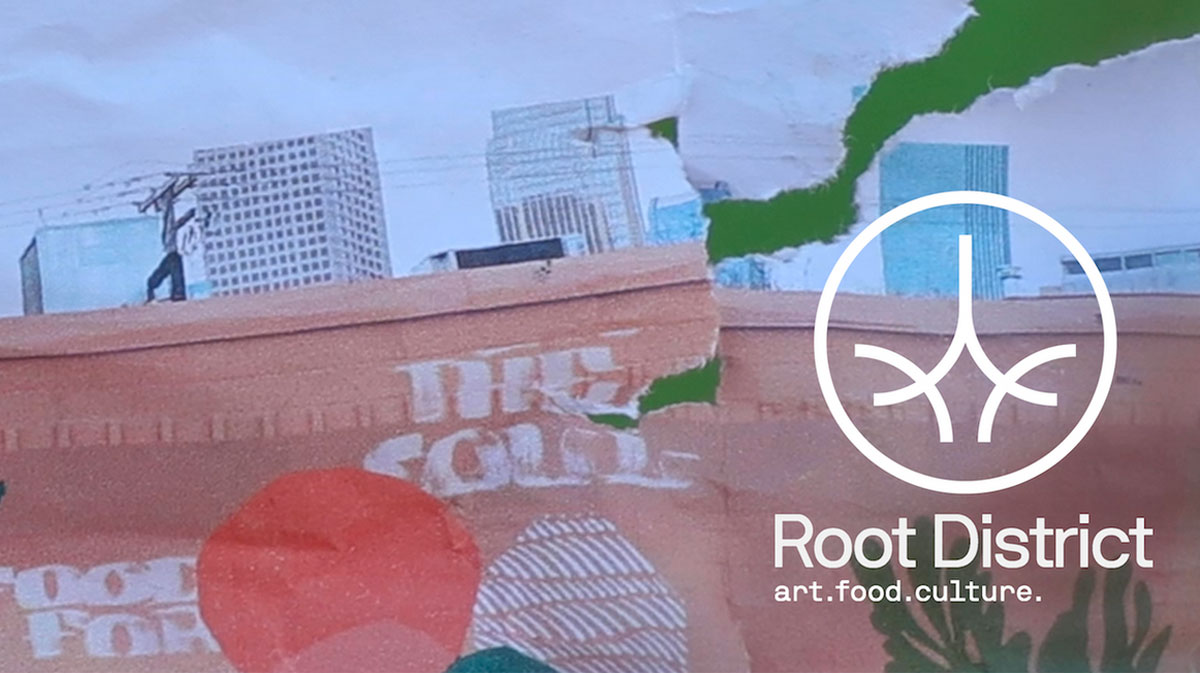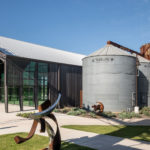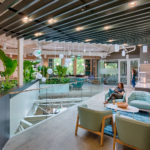Urban Planning: What Cities Can Learn from Minneapolis’ Commitment to Community
The Root District is pulling out all the stops to create an equitable, sustainable, and appropriately dense community in the heart of a major metro area.
There are three red sheds you can see as you drive north on the I-94 overpass from downtown Minneapolis. These sheds are home to one of the oldest farmers markets in the city, part of a neighborhood that is now being called the North Loop Root District. Since 1876, this small corner of the world (First Street and Hennepin Avenue, to be exact) has been offering locals fresh produce.
Per the City of Minneapolis’ 2040 comprehensive plan, this area will become drastically denser than it is today within the coming years. But feeding citizens will remain at the heart of the Root District’s redevelopment. And that’s largely because the city wants to involve the community in its progressive planning — helping to ensure the land is used both sustainably and equitably.
Bringing together a committee of diverse stakeholders, from community members to design and development professionals, the Root District is an incredible opportunity to deliver a model neighborhood, as defined by the people who live there. Led by NūLoop Partners, a public-private forum dedicated to the investment in and development of the North Loop area, I had the opportunity to join the Root District effort about two years ago. Today, the Root District leadership team and working groups — addressing Equity, Climate Change, and Creativity — are fully committed to realizing this new district model.
Anchored by the Minneapolis Farmers Market and the forthcoming Southwest LRT Royalston Station, the Root District is comprised of an area approximately 30 acres in size. This area adjacent to Target Field will provide one of the best opportunities in Minneapolis over the next 25 years for innovative and equitable development at a district scale.
Adding Community — and Equity — to the Sustainable Land Use Equation
More American cities are considering how to adopt the concept of the 15-minute city, a residential urban concept that has gained increasing momentum during the climate crisis and COVID-19 pandemic. The idea is that an urban citizen’s essential functions are within a 15-minute walk or bike ride from where they live, including their job, commerce, healthcare, education, and entertainment.
The goal is to create access-focused urban environments, which include food resources, green space, public art, maker spaces, jobs, and other community resources. But while a denser environment is in theory a more accessible community, it may not always be a more equitable community if decisions are being made from the top down. Community engagement in development and land-use decisions is critical because the redeveloped environment should meet the majority of their needs, including resilience and self-sufficiency in the face of events such as supply chain or energy grid disruptions.
However, building environments based on access alone doesn’t always take histories of urban inequities into account. Thus to build the ideal city of the future, you need to consider the city as it currently exists.
Community Progress in the Root District
The Minneapolis Root District project is still in the works, with district guidelines in progress and large-scale community engagement on the horizon. But its journey is one worth following to watch a more equitable, sustainable community take shape — one that’s responsive to what its citizens are seeking.
To enable a community-based approach to creating district guidelines, a team of diverse stakeholders were brought together by NūLoop Partners. For two years, residents, business owners, and design professionals have come together with the shared goal of creating a destination district that is centered on art, food, and culture. Three core working groups were created: one focused on climate change, one on equity, and one on creativity. Each overlaps the other and all address various aspects of racial, economic, and social equity. The committees have consulted with local government agencies, local universities, nonprofit and for-profit agencies, and individuals who live and work in this district to share knowledge and ideas.
As each committee’s framework has been developed, greater community engagement will occur by way of “talking circles,” presenting a better opportunity for local voices to be included. But even the initial groundwork has shown a clear area of importance: food.
Stakeholders have voiced the importance of the history of the Minneapolis Farmers Market and the idea of a food-oriented incubator hub and destination district. The voices heard thus far have emphasized the elimination of food deserts, which would give the district access to local, affordable, and healthy food choices. Urban agriculture, then, seems like a straightforward solution.

One of the Minneapolis Farmers Market murals created by artists from Juxtaposition Arts demonstrates the focus on art, food, and culture as part of the Root District’s vision to bring vibrancy and attract new potential to the area. (Image credit: Dan Collison)
Implementing solutions
When you start with what the community needs, development experts can then think in terms of targeted solutions. With the common theme of food access having risen to the top of the community’s interests, other stakeholders can begin to formulate plans related to accessibility as planning and development begins — all while keeping the overarching goal of sustainability top of mind.
If community engagement is part of the redevelopment process, district guidelines, and urban agriculture, then the question of “What kinds of foods and for whom do we grow?” is paramount. For example, the stakeholder team will need to consider the different types of urban agriculture options that would best serve the community, such as an on-grade community garden or large-scale indoor vertical garden.
Once these questions are answered, it will inform energy, water, soil, and even structural needs. One consideration for policymakers — in addition to creating urban agriculture zoning guidelines — is alternative ownership and funding resources to provide a more equitable redevelopment.
Through the City of Minneapolis, the Root District has an opportunity to become what is known as an Innovation District. The intention of which is to “employ district-scale infrastructure and systems and to implement flexible policies and practices that allow for experimentation and innovation consistent with City goals.” This sort of flexibility opens the opportunity for building a community from the ground-up, one that explores what the neighbors need before redevelopment plans are set in place.
With a Net Zero Imperative grant from ULI Minnesota, the Root District also has the potential to be a case study that offers prototyping of district guidelines and a community based-approach to land-use planning and redevelopment of the built environment that enhances equitable and sustainable communities. It’s not enough to build sustainably, we need to design with the needs of those living in the communities in mind as well — needs that they vocalize themselves.
Root District Mission: We seek to empower a diverse group of stakeholders and encourage deep engagement with social and market-driven forces. We aim to achieve equitable, reparative, regenerative outcomes for all who live and work here. Connecting people to place and to one another, we nurture cultural and artistic exchange and civic engagement. The Root District is a place for learning, invention, and exploration. The Root District is home. (Image credit: Dan Collison)
This blog post is part of our Land Use and Climate Change series. Read other posts in the series by Architect Ava Alltmont and Director of Landscape Architecture and Urban Planning Keith Walzak.




